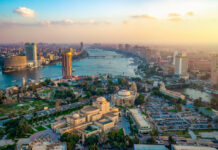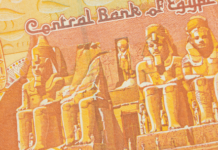Saudi Arabia is restructuring and opening its economic activities, rethinking the role of foreign investors as the kingdom looks to ease fiscal burdens and do away with dependence on oil, with a strong focus on the financial sector, tourism, technology, and foreign direct investment. The International Monetary Fund (IMF) projected that Saudi Arabia’s real GDP will rebound by 2.6% in 2021 after contracting last year due to the fallout from the dual shocks of COVID-19 and low oil prices.
The Saudi Central Bank (SAMA) expects the economy to swing back to growth by 3.2% this year after a 3.7% contraction in 2020. Under Crown Prince Mohammed bin Salman’s Vision 2030, the Saudis are leaving no stone unturned in their efforts to diversify the economy away from dependence on oil revenues.
The government’s efforts to diversify the economy are critical to sustainable growth and Moody’s indicated that Saudi Arabia’s credit rating could be upgraded if the country moves away from oil faster than planned.
Public Investment Fund (PIF), the driving force behind the kingdom’s economic growth and diversification, plans to double its AUM to $1.07 trillion) by 2025. Saudi Arabia introduced several initiatives in the first quarter of the year to spur growth in the non-oil economy including “Made in Saudi” and the new “Shareek” – a $1.3 trillion investment program to enhance the collaboration between the public and private sector.
The kingdom renamed its central bank to Saudi Central Bank (SAMA) last November as the government widened the regulator’s mandate to include supporting economic growth as one of its prime objectives. In the financial service sector, Saudi banks are well-capitalized by international standards and S&P Global expects them to outperform their regional peers on average despite the lower profitability.
Saudi Arabia, which unveiled its $264 billion (SAR 990 billion) 2021 budget last December, projected a deficit of $38 billion (SAR 141 billion) or 4.9% of GDP for the current fiscal year and aims to nearly balance its budget by 2023. S&P Global expects Saudi Arabia’s economy to recover in 2021-2022 from the shocks of 2020 as global demand for oil recovers and private consumption increases.
Financial sector
The Saudi financial services sector is the backbone of the country’s economic diversification drive. In 2018, the government launched a national development program that is aimed at increasing the total size of financial assets to GDP ratio, boost the share of capital markets assets and raise SMEs’ bank financing.
Earlier this year, SAMA issued the “Open Banking Policy” to ensure the Saudi financial sector’s infrastructure readiness to leverage “the most prominent financial technologies” and implementation of necessary regulatory practices. The central bank said that it “will work with market participants” amid plans to go live with open banking in the first half of 2022, a move that is expected to present significant opportunities for fintech companies and the country’s financial service sector.
Open banking allows fintechs and third parties to build products and services for the financial institution’s customers and these lower barriers to entry for startups increase competition and innovation, said Strategy&.
The Saudi central bank is also encouraging consolidation in the banking and insurance sectors to create stronger entities that can support the role the private sector plays in advancing the government’s economic diversification agenda.
Earlier in April, Saudi Arabia completed the landmark merger between National Commercial Bank and Samba Financial Group into Saudi National Bank (SNB), a banking giant with around $223 billion in assets. SNB is expected to be on equal footing with regional rivals Qatar National Bank and First Abu Dhabi Bank.
“With a 30% market share built on well-established franchises, SNB now enjoys a prime market position, strong capitalization and a well-balanced risk profile,” said S&P Global.
Last month, the Saudi stock exchange (Tadawul) said that it was changing its corporate structure into a holding company ahead of a highly anticipated listing this year. The newly created Saudi Tadawul Group will have four subsidiaries, Saudi Exchange, securities clearing center (Muqassa), securities depository company (Edaa) and a new technology-services business (Wamid).
The restructuring of Tadawul and possible public offering will make it the third publicly listed stock exchange in the GCC region after the Dubai Financial Market and Boursa Kuwait.
SAMA extended a deferred payment programme to support SMEs and private sector financing in March for another three months until June 2021 to bolster the economy that was hit by a double whammy of low oil prices and the coronavirus pandemic. The central bank also extended the guaranteed financing programme for an additional year until March 14, 2022 to support small enterprises.
Diversification drive
Saudi Arabia, the Arab world’s largest economy, is expected to witness sustainable growth on the back of the government’s continued efforts to increase spending efficiency and enhance public-private partnerships.
“As the vaccination program gains more momentum and COVID-related restrictions are eased, non-oil sectors will continue their growth trajectory, estimated to reach 3.5% in 2021 and reflecting stronger private consumption, gradual resumption of religious tourism, and higher domestic capital spending signaled through PIF’s five-year strategy (2021-2025),” said the World Bank.
The kingdom hopes to accelerate the privatizations of sectors of the economy to plug its deficit that ballooned last year due to the outbreak of COVID-19 and an expected plunge in oil revenues. Though Saudi Arabia’s reforms are starting to have a positive impact on the economy, the kingdom is still reliant on oil which accounts for three-quarters of the six-nation GCC bloc’s spending.
Saudi Arabia sold two flour mills to investor groups that comprised National Agriculture Development Co. and Abdullah Al Othaim Markets Co. in deals that are valued at $570 million and $229 million, respectively.
Saudi energy giant Aramco’s newly formed pipeline subsidiary, Aramco Oil Pipelines Company, agreed to a $12.4 billion deal to sell a 49% stake to an EIG Global Energy Partners-led consortium.
Crown Prince Mohammed unveiled the “Shareek” program in March, a $1.3 trillion initiative that seeks to bolster the collaboration between the public and private sector while mobilizing the country’s biggest listed firms such as Aramco, Saudi Telecom Co. and SABIC to help wean the kingdom from its heavy reliance on hydrocarbons export. The initiative is part of $3.2 trillion (SAR 12 trillion) worth of investments planned by 2030 and includes SAR 3 trillion from PIF, the Saudi sovereign wealth fund, and $1.07 trillion (SAR 4 trillion) under a new government investment strategy that is yet to be revealed.
KPMG stated that privatization and encouraging public-private partnerships (PPPs) will remain key to the government’s Vision 2030 goals – measures that have been given additional impetus by the rise in public debt.
PIF, with around $400 billion AUM on behalf of the government, is financing several mega-projects that are currently under development in Saudi Arabia including the $500 billion futuristic NEOM City, Qiddiya, and the Red Sea Development Company’s mega tourism project.
The development of the Red Sea Project commenced in the second half of 2019 with Phase One of the project expected to be completed in 2023. The entire Red Sea Project is expected to be completed in 2030 and upon completion, it will comprise 50 hotels with 8,000 rooms and around 1,300 residential properties across 22 islands and six inland sites, according to information on the company’s website.
S&P Global expects the investment initiatives that were recently announced by the Saudi wealth fund to spur corporate credit growth, mostly in construction-related industries and it will offset the gradual lifting of support aimed at easing the impact of the pandemic.
Debt issuance
Saudi Arabia’s budget deficit is financed by a combination of external and domestic debt issuance and drawdowns from its existing stock of assets, said S&P Global.
The Saudis have increased debt issuance in previous years to achieve fiscal sustainability and stability as well as to balance financing sources between debt and government reserves.
Saudi Arabia tapped international debt markets with a $5 billion dual-tranche dollar-denominated bond in January as Gulf countries continue to raise cash buffers to weather the pandemic crisis. The $2.75 billion 12-year notes mature in 2033 while $2.25 billion 40-year security mature in 2061.
The government returned to capital markets to issue $1.8 billion (EUR 1.5 billion) euro-denominated bonds in February, as the kingdom joined the ranks of countries that get paid to borrow in euros as the outlook turns favorable with a recovery in oil prices.
According to Bloomberg, Saudi Arabia expects public debt to hit the $250 billion (SAR 937 billion) mark by the end of 2021, more than 30% of economic output. Morgan Stanley also expects Saudi Arabia to be the biggest emerging-market issuer of hard-currency debt this year with $14.5 billion of bond sales.
Saudi Arabia is betting on tourism as the kingdom seeks to increase the contribution of the sector to the GDP by 10% and generate one million jobs by 2030, part of the government’s larger plan to attract around $133 billion in new investments over the next decade. As part of its broader plan to diversify the economy, Saudi Arabia said together with state-backed entities it would cease doing business with foreign firms whose regional headquarters are in any other country by 2024 in a bid to curb “economic leakage”.



